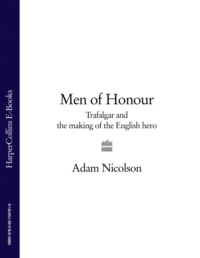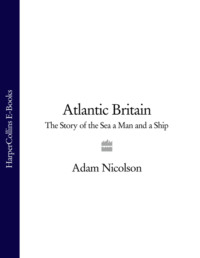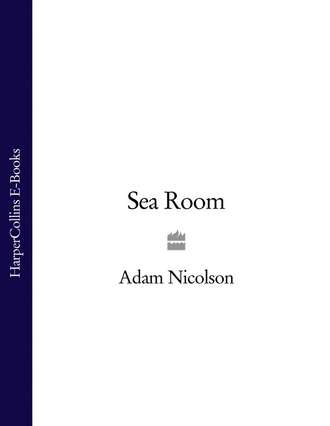
Полная версия
Sea Room
The Shiants themselves, though, can never have known any of this. They never had their Hawaiian period and parakeets never flitted along these shores. These islands – or what are now these islands – came into existence two miles or so underground, perhaps under another volcano which has entirely disappeared.
That much was known in the nineteenth century. Since World War II, the understanding of the Shiant rocks has developed enormously, largely in the hands of Fergus Gibb and Mike Henderson, who, in five visits and with extensive laboratory analysis, have, quite extraordinarily to my mind, been able to establish a sequence of events that occurred here over a few decades about sixty million years ago.
It is a vast poem written in heat and liquidity. Remove the sea from your mind. That has nothing to do with it. You are in the dark of the Earth’s crust, several miles down. About a hundred and twenty million years before, in the Lower Jurassic, enormously thick accumulations of mud, silt and sand had built up in layer after layer on the floor of an earlier sea. These mud stones and shales have become rock. Beneath them, a huge bubble of hot molten rock starts to rise. The pressure it exerts opens fissures and ruptures in the overlying layers and it is between those laminations that the magma wants to squeeze.
This is the moment of the Shiants’ creation. The liquid rock, deep underground, probably took the form of what geologists call ‘a cedar tree laccolith’, a set of leaf-like chambers arranged around a central stem like the boughs of a cedar tree. The magma, pulsing from below, still hot from the energy generated when the planet first formed, runs into each chamber and beyond it into new leaves, new extensions of the form. The idea of a single tree is wrong: more likely a forest of them, the forms connected through the bough tips or a branching of the stem. The growth of this red-hot forest, each tree fifteen miles high and its canopy spreading as much as ten or fifteen miles wide, was moving north from the southern Hebrides. The whole floor of the Little Minch is covered in the leaves of that infernal cedar grove. In the far more recent past, glaciers have gouged hollows between them in the softer Jurassic sediments, leaving a family of submarine Shiants between here and Tiree. Occasionally they break surface, in the islands of Staffin Bay, the Ascrib Islands, Fladda-chuain, Eilean Trodday, all off the northern tip of Skye and in Sgeir Inoe, the lonely and vicious rock off Scalpay. Most are unseen, apparent only in the kicking of the tide.
Deep inside those ancient layers, the Shiants came into being in an orgasm of incandescent liquid. It was enormously hot: the greatest heat reached in the most violent fire in a burning building is about 850°C. That can melt bricks, turning them into pools of liquid glass. The Jurassic mudstones melt at about 900° but the heat of the magma itself was about 1150°C.
The Shiant intrusion would have been pulsed, the impulse coming and going, like a breath, an exhalation, pushing at the rocks above it and distending them. That dynamism is now fixed in the form of the rocks. You can find precisely the point – it is revealed on the shore in the bay next to the house – where the inrush of radiant magma came up against the cold mudstones in the roof of the cavity. Pull away the kelp and the serrated wrack. The little green crabs scuttle for the dark, the tiny transparent shrimps wriggle like rugby players in a tackle, and you can see the instant of creation frozen and preserved in front of you. The raging heat of the magma meets the old, cold mudstone and that meeting has had a double effect.
Elsewhere on the islands, you can see in the mudstones the layering of the sediments as they had settled onto the Jurassic sea-bed and you can find many fossils of ammonites and belemnites embedded in them like meat in a cold pie. Here, though, that has all been lost in the cataclysm. The mud stones have been baked hard into the solid grey stone called hornfels, without layers in it and without fossils. If you break the stone open, though, as Mike Henderson showed me, you can find the ghosts of the life once preserved here. Heat and pressure has transformed everything that was once in them and a faint, coppery, gilded sheen coats the inner surfaces of the rock. These are what Mike Henderson called ‘the pyritised remains’, the only evidence of the fossils which the rock once held, reduced in the furnace to this undiagnosable inkling, a breath of a suggestion, like the ash of an abandoned hearth. But the mud stones also exacted their price from the magma. Where the hot, molten intrusion came into contact with the country rock it was suddenly chilled. The semi-crystalline mush of the liquid, a kind of hot granita, was shocked into solidity by the old, cold stones. In suddenly becoming solid, the minerals in the magma are small, almost instantly formed and so the rock is as smooth and as fine-grained as cheese. That analogy is curiously exact: where you have broken the rock open, the fracture marks are exactly like those you find on the open face of a piece of broken Parmesan. ‘Chill’ or ‘chilled margin’, as this frozen magma is called, sits all alongside the hornfels on the beach, the twin products of intense heat meeting ancient cold, fifty-eight and a half million years ago.
Many things are still not clear about the making of these islands, nor is the precise order of events certain. Broadly though, it seems that several blades or ‘sills’ of magma were intruded here over a period of perhaps a century or two. One fairly narrow one, having cooled quite quickly, can be seen in the Galtas. Another makes the rib of rock through which the natural arch passes at the north-east corner of Garbh Eilean. A third forms Eilean Mhuire and the fourth, by far the largest, 537 ft. thick, created the vast bulk, about four hundred acres, of Garbh Eilean and Eilean an Tighe. No one has yet found how these sills are related to each other, nor how they are connected to the huge feeder pipe along which the magma arrived from the south, but it is obvious that some of the old Jurassic rocks, the mudstones and shales, were caught up in the process. Most of the top of Eilean Mhuire consists of a huge raft of those older rocks buoyed up like a baulk of wood on the flood of magma which poured in, mostly below but some also above it. Another slab of old rock crosses the north-east corner of Garbh Eilean and has been eroded in the bay that stretches out below the puffin slopes there. Those soft and crumbly rocks, full of the nutritious minerals which accumulated on the Jurassic sea-bed, make far better soils than the hard, solidified magma of the sills. These Jurassic rocks, richer than almost anything in Pairc or Harris, and comparable in Lewis only to equivalent rocks around Stornoway, have been the basis for most of the farming on the Shiants. Without the wealth of Eilean Mhuire and the beautiful meadows at the Bagh on Garbh Eilean, it is difficult to think that life on the Shiants would ever have been possible.
For the professional geologists, this story is only the introduction to the book. They seek to penetrate much further into the arcana of chemical detail, above all into the diagnostic mineralogy of the different sorts of rocks to be found on the islands.
Previously it had been thought that the different minerals that can be seen in different places were the result of large crystals settling towards the bottom of the sill as the magma cooled. That was the old orthodoxy developed in the 1930s but Fergus Gibb and Mike Henderson have over the last four decades pushed most of that aside and discovered a quite different process.
As they have revealed, the enormous main sill of Garbh Eilean and Eilean an Tighe is itself made up of at least four different pulses of magma. These were not violent events but of great scale and immense power, slowly applied; a slow squeezing apart of an abscess the size of fifty city blocks. The Shiants laid on Manhattan would stretch from Wall Street to Times Square. These successive pulses are not, as you might think, laid one on top of another, in the way you would assemble a sandwich: mustard on top of the ham on top of the cheese on top of the butter on top of the bread. Not at all: each new one inserted itself, in a hot, licking tongue of new magma, within the body of those that had come before. They could only have done that if the preceding magma was still quite soft. In other words, here in this main sill, they must have followed, one from the other, quite quickly. The picture is of a gradually fattening sandwich, made in something like a piece of pitta bread. You begin with the bread alone, and one by one, butter, jam and peanut butter are squeezed inside it. The sequence you end up with, then, is: bread, butter, jam, peanut butter, jam, butter, bread.
In the Shiants, although the sandwich is 537 ft. thick, it is almost precisely like that, made up of four interleaved layers. The first, of a rock called teschenite, was 6 ft. thick (the top and bottom of this layer are now 531 ft. apart), the second (picrite), 78 ft. thick, the third (crinanite-picrodolerite), 440 ft. and the fourth (granular olivine picrodolerite), just 13 ft.
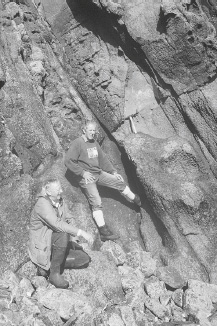
Beyond that, I fear, it becomes difficult for a layman to follow. I could tell you about the mineralogy of these islands, with the intriguing differences between picrite (which cooled slowly, so has big crystals and looks wormy, with an eroded surface like the mottled, liver-spotted skin of a toad or like penne in a pesto sauce) and picrodolerite (quicker cooling, a fine, granular porridge), or about the beauty in freshly broken rock of the tiny grape crystals of the olivine and the big black glitter of the pyroxenes, about the evolution of the magma over the years of its emplacement, so that the last spurts of it produce a strange, white, open-structured, vast-crystalled rock called syenite on Eilean Mhuire – but I won’t. This is not the place.
After the magma from the vast chambers below had finally exhausted itself, the Shiants, still deep underground, began to cool. From both above and below, the chill started to reach inwards into the heart of the semi-liquid mush, like the hemlock in the limbs of Socrates. It might have taken a century or so for the rock to become solid. As it cooled, it shrank, and that is the origin of the columns of which the Shiants are made. Any large body of shrinking material, contracting over its entire width, pulls apart from itself internally. Shrinkage cracks develop in the body of the rock identical to the network of polygons that develop on the floor of a drying lake. The columns are nothing more than a network of cracks extended into a third dimension.
If this cooling had been conducted in laboratory conditions, where the magma sheets were of equal thickness throughout and both upper and lower surfaces of the intrusions were level, then a structure of complete regularity would have emerged. All the columns would have been straight, the same size, and parallel. But this is not a laboratory. Some of the intrusions were clearly thin (in particular the one that formed the Galtas) and cooled more quickly. This has meant that the columns are themselves much thinner there. More intriguingly and beautifully, it is clear that the opening into which the magma squeezed was uneven. The columns would have formed by growing perpendicular to the cooling surfaces and here the unevenness of those surfaces has created columns that curve, twist and bend, are waved like the hair of art deco statuettes, fixed in the elegance of a geological perm, Jean Harlow turned to stone, Madonna having glimpsed the Gorgon.
Others, such as the upper sections of the north cliffs on Garbh Eilean, cooled so quickly that whole slaggy masses of rock became solid before columns could develop. Below them, deeply buried in the huge Garbh Eilean sill, the magma cooled very slowly indeed and here the Shiant rock-forms attain the great magnificence of the giant columns. These were the forms over which John Macculloch, the early geologist, enthused in 1819:
The lover of picturesque beauty will here, as in many other parts of the Western islands, be gratified with a display of maritime scenery combining the regularity of Staffa with the grander features of the coast of Sky. Towards the north it exhibits one continuous perpendicular face of naked rock. This face is columnar throughout, and forms a magnificent scene for the pencil; spreading in a gentle curve for a space of 1000 yards or more, and impending in one broad mass of shadow over the dark sea that washes its base. In simplicity and grandeur it exceeds Staffa almost as much as it does in magnitude; offering to the tourist an object as worthy of his pursuit as that celebrated island, and of no very difficult access from the northern extremity of Sky.
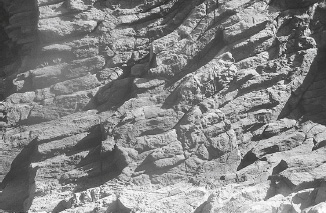
The Shiants languished in obscurity, while their more famous, and more accessible cousin-rocks off Mull became ever more visited. Perhaps the open waters of the Minch protect the Shiants from fame. Perhaps the nearness of Staffa to Iona creates its public success. And having witnessed, from the deck of a boat, Staffa sagging one summer’s day under the weight of its geological trippers, I can only say; ‘Thank God’.
A Gothic fate awaits the Shiants. There has been a steady geological drizzle over the millennia which has created the huge scree slopes at the feet of the cliffs. Giant pencil stubs the size of small houses lie tumbled like the aftermath of an earthquake. Sometimes, groups of them still hang together as if thrown in a clump on the rubbish heap. The birds live in many-storeyed tenements among them. If you walk across them, the lorry-sized rocks wobble and creak beneath you. Shiant dynamism is not over. The cliffs themselves are a symptom of the slices being taken out of them and the hard edges of the islands are signs of destruction in progress. ‘The upper millstone heaven,’ Ted Hughes once wrote, ‘Grinds the heather’s face hard and small.’ It isn’t only the heather. Fergus Gibb reckons that ‘a million years or two should see the Shiants off.’
Every spring, I look for the new scars, the beds from which the lumps of rock have broken away. They are unnerving places. Where the splits have occurred, the remaining edges are as sharp as knives. You can cut your hands on them. For some reason, the bare unlichened stone smells of iron or even blood, because blood smells of iron too. The smell is one of deep antiquity, a release into the nostrils of elements in the rock which have not been volatile since the rock was made. It feels as intimate as poking your fingers into a wound.
I have never witnessed something which I have spent hours in a boat waiting to occur: the collapse of an entire column from a cliff. Fergus has only seen it once, and then not here but in the similar rock formations in Trotternish, the northern wing of Skye, twelve miles or so to the south. He too was in a boat on the quiet sea. Alerted by a shuffling, a distant rumbling in the silence which on still summer days hangs around these places, Gibb looked up from his notes. Across the bay, an entire thin pencil, perhaps three hundred feet high, six or eight feet across, was slipping in slow motion into the sea. The base of the column, like many of them, must have been eaten away by the sea. Incredibly, the columns of which the islands are made are scarcely more bound to each other than pencils in a box and once the base has gone, knocked out by a winter storm, there is nothing to withstand the force of gravity. That morning, the column slid down, buckled and then fell, not like a felled trunk but with the shaft snapping in two places in mid-air before the three giant sections crashed like stone hail into the stillness of the Minch. The birds clattered away from the impact, the wash ran up to Gibb’s boat and on past it and the silence pooled back in. Fergus said it was like a glacier calving.
These rocks are killers too. In 1796 the Reverend Alexander Simson, the Minister of Lochs, described the Shiants in his statistical account of the parish:
There is one family residing on the largest of the islands. The head of this family has been so unfortunate as to lose, at different times, his wife, a son, and a daughter, by falling down great precipices; the mother and son met with this catastrophe in following sheep, and the daughter, by going in quest of wild-fowl eggs.
There is no further explanation of why they should have fallen. It is easy enough to slip on the dew-wet cliff-top grass, or to be blown away in a sudden gust, or for a rope to fail, but it seems likely enough to me that the collapse of part of a cliff might be to blame.
More recently, the sheer instability of Shiant rocks killed a boy. On 28 June 1986, a party of teenagers and their teachers from Cranbrook School in Kent had just arrived for a summer expedition to the islands. It was a beautiful evening, and as they were putting up their tents, one of the boys, Simon Woollard, an experienced alpinist and gifted climber, decided to climb the small cliff just behind the house. It is no more than twenty feet high and I have often climbed it myself, pushing up past the bunches of wild thyme, the purple knapweed and the hart’s tongue ferns, without ropes, for fun. We had given names to some of the routes – ‘Grassy Chimney’, ‘The Squeeze’, ‘Crab Lunch’ – ‘a naughty little climb with pretentious reaches’, as I wrote in the visitors’ book when I was seventeen.
That evening in 1986, Simon Woollard did it by the book. He was belayed from below, wearing a harness and a helmet. His friends were watching him from among their tents on the grassy level behind the house. The Shiants on a summer evening like this, as the sun begins to drop towards the hills of Harris, and the two Galtas stand out as a pair of black moles against the colours of the evening, and as the birds come in from their fishing for the evening wheel between the islands, is the happiest and calmest of places. It could not hurt you. It was then, at about twenty to nine in the evening, that, towards the top of the cliff, a block of dolerite over which Simon was pulling himself came away in his hands. It was about the size of an armchair. He fell with it for a moment but was then held by the rope and the rock sliced through his helmet and into his head. He died there, at the foot of the cliff where he had fallen, and later that night, after many hours’ delay and unspeakable distress for those who were there, a helicopter from RAF Lossiemouth came to take his body and some of his friends back to Stornoway. The others left thirty-six hours later, when Donald MacSween collected them from Scalpay. There is a small plaque at the place where Simon died and none of us has ever climbed there again.
That is not quite true. I came to the islands a couple of weeks after Simon Woollard had died. The evidence was still there: shards of broken rock on the turf at the cliff foot, still sharp, a huge and horrifying stain on the boulders which the rain had not yet washed away. On the evening of the accident, Adam Tozer, the master in charge, had written in the visitors’ book that there had been a fatality. With big, slashing, diagonal lines he had crossed out the pages in which we had described the various routes. ‘DO NOT CLIMB’, he had written across the sketch of the rocks on which the boy had died.
For the first day or two I did what he asked and kept away, but reluctantly. Not to climb what we had always climbed would mean the cliff would be haunted by a kind of denial. These islands were a place in which, if you took care, nothing had ever been denied. You could risk a storm if you knew what you were about, you could happily expose yourself to weather which at home you might have hidden from. I decided to climb the cliff again. I went up to the foot of a familiar route, the Grassy Chimney, an adder’s tongue fern in the cleft above me, a cushion of thyme on either side. I reached up for the first hold, pulled my body up six inches, perhaps a foot, and as I did so, as I applied my weight, I felt the block, a cubic yard of dolerite, ease out a little from its bed. I let go of it as if it were a burning coal and dropped those few inches back to the turf. Never again.
6
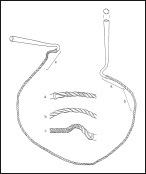
I HAVE SAT FOR HOURS on the bench in front of the house – it’s a plank of driftwood on a pair of stones – watching Donald MacSween trawling for scallops (or clams as they are called in the Hebrides) in the waters a mile or two away just south of the Galtas. He has a new boat now, the Jura, but in the 1980s, it was the Favour, a steel thing, not, it has to be said, the greatest beauty that Scalpay has ever known, painted red and white, with its name in huge letters on the wheelhouse.
Sometimes, he and Kenny Cunningham, his crewman also from Scalpay, went on deep into the night and on a quiet evening all you could hear for hour after hour was the groaning monotone of the diesel, a slow surging in its note, as the Favour
Конец ознакомительного фрагмента.
Текст предоставлен ООО «ЛитРес».
Прочитайте эту книгу целиком, купив полную легальную версию на ЛитРес.
Безопасно оплатить книгу можно банковской картой Visa, MasterCard, Maestro, со счета мобильного телефона, с платежного терминала, в салоне МТС или Связной, через PayPal, WebMoney, Яндекс.Деньги, QIWI Кошелек, бонусными картами или другим удобным Вам способом.





